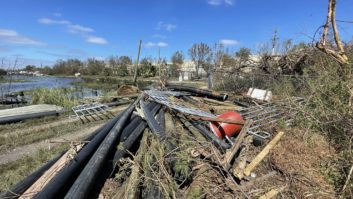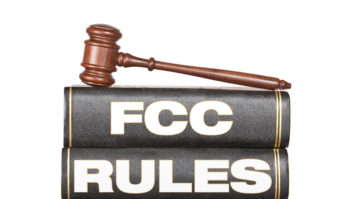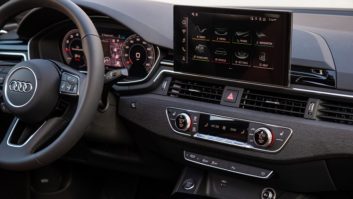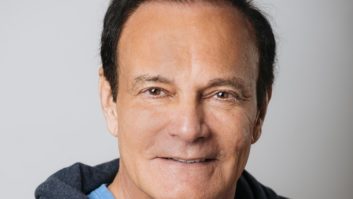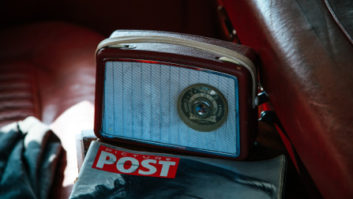
In Finland, Nelonen Media’s Supla app puts radio
and other audio content on users’ smartphones.
LONDON — Conventional radio and television broadcasting are doomed, eventually. Or so one might reasonably assume from reading “British, Bold, Creative,” the BBC’s broadcast charter proposal for the next decade of its mandate. The BBC’s 10-year broadcast charter is up for renewal in 2016. The proposal is the Beeb’s funding pitch to Parliament.
To be sure, the BBC didn’t use the word doomed, or put a timetable on it. However, over the next 10 years, “We will be moving to an Internet-fit BBC, to be ready for an Internet-only world whenever it comes,” states the BBC proposal. The only limiting factor will be to “move at the pace of our audiences”; ensuring that older subscribers have access to content on radio and TV as long as they need it.
Subsequent to issuing this proposal, the BBC announced that it is reorganizing its internal divisions along content rather than platform lines. For instance, “Each overarching division would have subsidiary divisions such as BBC Youth, a mooted subdivision of BBC Entertainment, which would include the online channel BBC Three, and pop music station Radio 1,” reported The Telegraph newspaper.

BBC Radio 1’s YouTube channel is viewed
an average 1.25 million times daily.
Having a respected broadcast institution like the BBC speak of an “Internet-only world” as a certainty is enough to give radio broadcasters pause. Is their over-the-air transmission medium doomed? To find out, and to put the shifting relationship between radio broadcasting and the Web/mobile into context, we spoke with the BBC, Australia’s ABC Radio, the national U.K. DAB station Fun Kids, and Finland’s Nelonen Media; maker of the Supla radio/audio streaming app.
A MULTIPLATFORM LANDSCAPE
The BBC currently reaches big audiences via over-the-air radio broadcasting. For instance, “BBC Radio 1 has a reach of 11.36 million listeners a week and we reach 40 percent of 15- to 24-year olds in the U.K.,” said Rhys Hughes, Radio 1 and 1Xtra’s head of Programs. That said, Radio 1’s YouTube channel receives an average of 1.25 million views a day, while Radio 1’s online iPlayer channel receives over 1.4 million requests per month. So when it comes to overall reach, Web/mobile is a big part of Radio 1’s distribution strategy — and growing in significance.
“FM and DAB are still very important — around 65 percent of Radio 1’s listening is on FM — but there is no question that the Web is an increasingly important tool for distributing our content,” Davies said. “The phrase we use is ‘you have to fish where the fish are’ and young audiences are online, so we are too,” he added. “Whether it’s YouTube, streaming services like Spotify, or social media, Radio 1 has a presence. The mantra is ‘Right Content, Right Platform, Right Time.’”

A Screenshot of ABC Radio’s Mobile Website
Australia’s ABC Radio also sees a growing role for Web/mobile distribution; even beyond its launching of the Internet-only service ABC Classic 2 (which features 100 percent Australian classical artists and performers). “As well as linear and digital platforms, all national, digital, online and capital city stations are streamed via radio.abc.net.au and via the ABC Radio app, which offers a range of user options including the ability to share on Facebook, Twitter or via email,” said Linda Bracken, ABC Radio’s head of Content & Digital Strategy. “The app includes a voiceover element developed in consultation with Vision Australia and ensures best practice accessibility for people without sight. There are also individual apps for youth networks triple j and triple j unearthed.”
Clearly, both the BBC and ABC have embraced the Internet in all its forms as a distribution platform of growing importance. But despite the BBC’s broadcast charter proposal predicting an “Internet-only world,” neither broadcaster is buying flowers for broadcast radio’s grave quite yet.
A case in point: Although Davies expects BBC’s audience ratio (between broadcasting and streaming) to be “approaching 50/50” in five years’ time, “conventional broadcasting is not doomed,” he declared. “People said radio was over with the birth of television, but radio has remained a vital medium. The change has been that you cannot just provide a linear radio station, you need a visual strategy and a social media strategy; like Radio 1’s ‘Listen, Watch, Share.’”

Linda Bracken, ABC Radio’s Head of Content & Digital Strategy
MAYBE NOT AS DOOMED
ABC Radio’s Linda Bracken is similarly skeptical about radio’s projected demise. “The tyranny of distance in Australia means that an AM transmitter has the capability to stretch thousands of kilometers across remote terrain, so we still see conventional broadcasting as a very important part of our strategy,” she said. “A real strength of the ABC local radio network is in providing emergency broadcasting. In times of bushfire or floods, traditional broadcasting is still very important.”
At the same time, Bracken echoes Davies’ warning that “business as usual” for broadcast radio is no longer adequate. “Now we take a holistic multiplatform approach,” she explained. “You can listen to the live radio coverage and get updates on our Websites and on social media from both our local stations and also the emergency services.”

Fun Kids is the U.K.’s DAB/Web-streamed kids’ radio channel.
Fun Kids’ Station Manager Matt Deegan also believes in the importance of terrestrial broadcasting; in this case via DAB, because Fun Kids has never been on either AM/MW or FM. “I am consistently shocked how low our Internet listening is. We think it’s well below 10 percent of our total,” Deegan said. “We are in a great market — there aren’t loads of radio stations for kids — we’re on all of the aggregators, and we’re in the successful UK Radio Player. But there is absolutely no way we could run the station with this level of content, relying on our Internet listening alone.”
Even Johannes Saukko, Nelonen Media’s digital manager (radio), says that broadcast radio will still play a role in the years to come; despite the Supla app maker’s belief that “the future of radio is in portable [smartphone] or wearable devices and in connected cars.” Even with this march away from broadcasting, “traditional FM radio in 2021 will still be bigger [than streaming] in terms of reach; especially among the older demographics,” Saukko said.
In the current transitional environment, it is impossible to see just where broadcast radio will be in 10 and 20 years’ time. The BBC’s prediction of an inevitable “Internet-only world” notwithstanding, there are still many parts of the Third World where one-way radio broadcasts remain the only economical, effective way to reach mass audiences; no matter what advances are being made in 4G-and-beyond smartphones in the First World. Add broadcast radio’s resiliency in the face of natural and manmade disasters — compared to the frequent overloading and failure of cellular telephone networks during such incidents — and the notion of shutting down broadcast lifelines seems unlikely in these regions.
That said, there is no doubt that content, rather than specific delivery platforms, is becoming the defining factor for radio broadcasters big and small. So although broadcast radio seems likely to endure in an increasingly Web/mobile-dominated distribution future, what role it will play is impossible to predict. “The speed of change is very hard to estimate,” Saukko observed. “The only thing that is sure is that change is on the way.”
James Careless reports on the industry for Radio World from Ottawa, Ontario.






